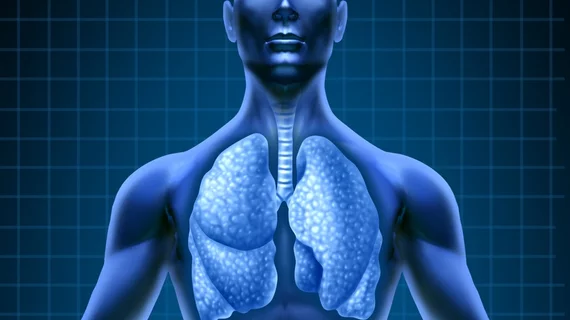Researchers are able to examine patient-specific characteristics and improve the the predictive ability of lung cancer screening while still maintaining the sensitivity of low-dose CT similar to the National Lung Screening Trial (NLST), according to a study in the Journal of the American College of Radiology.
The NSLT showed when low-dose CT is utilized during annual screening of a high-risk asymptomatic population, overall and lung cancer-specific mortality rates are reduced by 6.7 percent and 20 percent, respectively.
“When NLST is applied across the board, a large number of lung nodules will be diagnosed,” wrote lead researcher Reshad Hassannezhad, MD, of the Tabriz University of Medical Sciences in Tabriz, Iran. “The high rates of false-positive results for lung cancer screening observed in the NLST not only forces health systems to expend higher budgets but also imposes psychological stresses, additional invasive procedures and related complications upon individuals.”
Reshad and Nafiseh Vahed, MSc, also from the Tabriz University of Medical Sciences, noted there are plenty of models that can distinguish between malignant and benign lung nodules. But radiologists have not reached a consensus on which variables to utilize or the appropriate cutoff point for increasing the positive predictive value.
To further study nodule features and patient-specific characteristics, the researchers developed a model that included nodule-level features and patient characteristics. The model was based on improvement in predictive ability and without restrictions on the significance level for variables that were utilized. Their model had a sensitivity value of 93.6 percent—equal to the NLST.
The analysis included parameters such as age, race, gender, cancer history, family cancer history, smoking status and smoking pack-years. The researchers also assessed the longest perpendicular diameter of the nodule and its interaction with the longest diameter.
Hassannezhad and Vahed reviewed more than 32,000 nodules from 9,728 patients. Using their model, the researchers found the positive predictive value was improved to almost 8 percent, which is more than twice of the NLST. Additionally, they found the area under receiver operating characteristic curve (AUC) was 91.7 percent.
Of the total number of nodules included in the analysis, 639 were malignant, and 90 percent of these were correctly diagnosed as positive using the researchers’ model. At the individual level, their model correctly diagnosed almost 94 percent of the subjects as positive for the same cutoff point as the NLST and the positive predictive values for the nodule and individual levels were 6.3 and 7.9 percent, respectively.
“This study applied the first random-effects modeling to NLST data,” the authors wrote. “The main findings of the present study might have more computational values than clinical perspective. For instance, although the observed increment from 3.6 percent to 7.9 percent is statistically significant, it may not have a very remarkable effect on clinical practice. However, computational or statistical findings are not exclusive from real life. They are ultimately translated into guidelines and part of our daily clinical decision making.”

